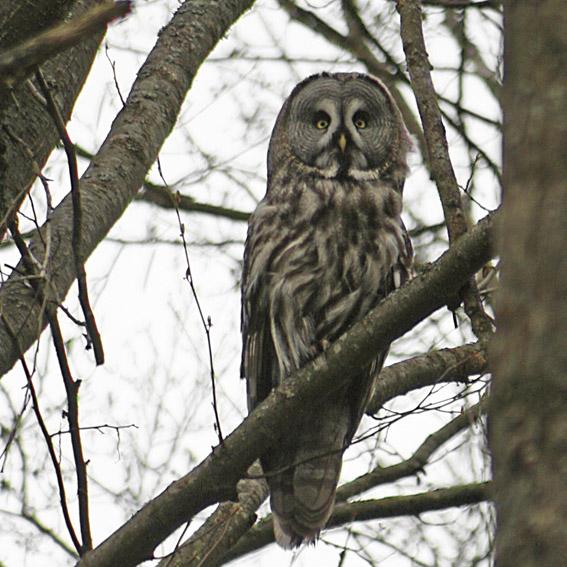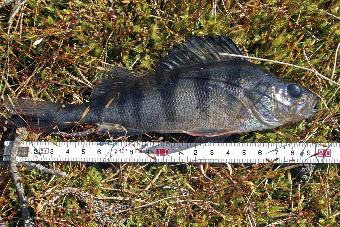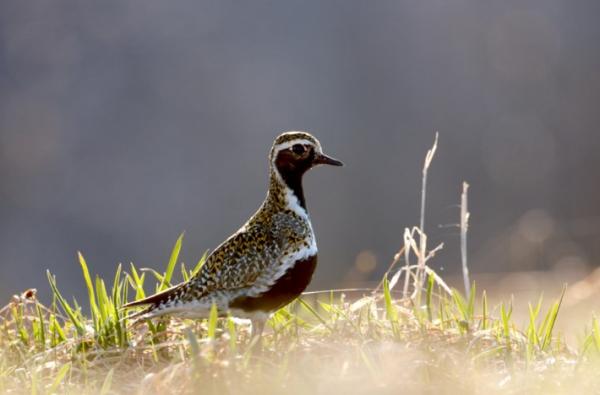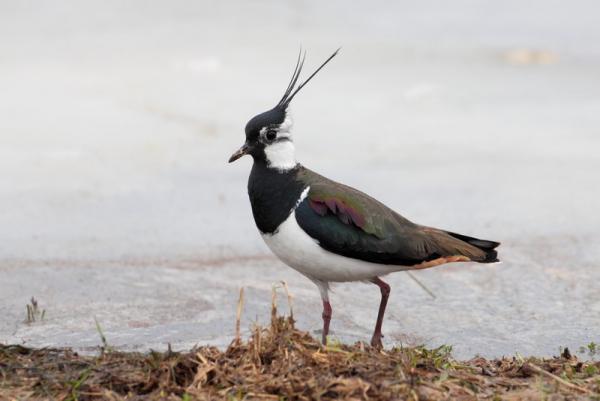The fauna of the Polistovsky Reserve belongs to the European-Obsian subregion of the European-Siberian region of the Palaearctic suborder of the Holarctic (boreal) kingdom (Abdurakhmanov, Lopatin and Ismailov 2001). The fauna of the reserve is characterized by certain, peculiar only to it, features that distinguish it from other faunas. The structure of the fauna of the Polistovsky Reserve is also characterized by certain peculiarities. The low degree of study does not yet allow us to conduct an analysis of the fauna of the Reserve as a whole, only on individual groups, where the inventory is completed or close to completion. The fauna of the Reserve is very specific. On the one hand, the location of the territory of the Polistovsky Reserve on the border of two natural zones - taiga and sub taiga, undoubtedly, imposes its imprint and provides diversity of animals. Large predators (wolf, bear, lynx) and hunting species of ungulates (roe deer, wild boar, elk) are still common in the bog forests. Here are common species of taiga origin, such as the great gray owl, wood grouse, nutcracker. Representatives of fauna of broad-leaved forests are regularly met - the nuthatch, green mockingbird, beagle. There are even newcomers from the Far East - the grey woodpecker, oriole, green warbler. On the other hand, about 250 thousand hectares of the Polistovo-Lovatskaya bog system determines the originality and uniqueness of the fauna of the Polistovsky Reserve. First of all, the bog massif is distinguished by the unique composition of ornithofauna. Here you can note the nesting species of the Arctic and Subarctic - willow ptarmigan, Eurasian golden plover, black-throated diver, with species of southern forests - swift, European nightjar, whinchat, and even the steppes – black-tailed godwit and Eurasian skylark. Species of water bodies, such as mallard, Eurasian teal, and actitis, inhabit the bog next to species of open landscapes - lapwing, Eurasian whimbrel and Eurasian curlew.
In comparison with the surrounding landscapes, the fauna of the Polistovsky Reserve has been subjected to a much lesser anthropogenic impact due to the low population density in the bog area, the difficult terrain of the bog and its low attractiveness to people. Rare bird species that have disappeared from most other districts of the Pskov Region have survived here for nesting: golden eagle, merlin, black-throated diver, willow ptarmigan, great curlew, Eurasian golden plover, gray shrike. At the same time, we have to admit the extreme unevenness and the currently weak degree of study of the fauna of the Polistovsky Reserve. So far, the study of the fauna of the Reserve has covered only certain groups of animals: terrestrial mammals, birds, aquatic invertebrates. Practically unexplored are bats, amphibians and reptiles, terrestrial invertebrates, including an extensive class of insects.
Forest fauna
In spite of the fact that bog habitat types prevail on the territory of the Polistovsky Reserve, and forests occupy a very small area, forest animal species are quite widely represented in the fauna. In addition, the location of the Reserve on the border of the southern taiga subzone and the zone of coniferous-broadleaved forests, undoubtedly, imposes its imprint.
The animals of the taiga complex of the Polistovsky Reserve are connected with the spruce and small-leaved forests: western capercaillie, hazel grouse, Ural and great grey owls, common wood pigeon, black and three-toed woodpeckers, spotted nutcracker, goldcrest, dunnock, willow warbler, redwing, willow tit, bullfinch and some others. Among mammals, common in the Polistovsky Reserve are hare, wolf, fox, brown bear, lynx, ermine, moose, common and lesser shrew, squirrel.
There are also many species of broad-leaved forests in our area. The following species are associated with the south of the European forest zone, mixed and broad-leaved forests: nuthatch, common chaffinch, wood warbler, icterine warbler, song thrush, Eurasian blackcap and garden warbler, crested tit, carduelis. As it should be expected, we have very few species of the complex of far-eastern coniferous-broad-leaved forests: gray woodpecker, oriole, red-breasted flycatcher and green warbler. Among the terrestrial vertebrates are common: Ural field mouse, bank vole, mole, common hedgehog, marten, polecat, wild boar and European roe deer. Among amphibians the grass frog is common and even numerous.
Secondary small-leaved forests, which occupy most of the forest plantations of the Polistovsky Reserve and the protected zone, have a high degree of mosaicism, thus providing a good food base for predators. They are inhabited by wolf, fox, raccoon dog and ermine. black kite, buzzard and greater spotted eagle can also be found here. Among the passerines in the small-leaved forests of the Polistovsky Reserve, common chaffinch and willow warbler dominate, as well as the garden warbler, Eurasian blackcap, robin, European pied flycatcher, great tit are numerous.
The primary small-leaved forests - the black alder forests, are the most interesting in faunistic and, above all, in ornithofaunistic aspects. Here we find the black sandpiper, white-backed woodpecker and marsh tit, as well as water vole, water shrew and American mink. In winter there are 20 species of birds, including 6 species of woodpeckers and 3 species of hens – hazel grouse, black grouse, and capercaillie. The most numerous inhabitants of small-leaved forests in winter are redpolls. Among tits, the willow tit predominates. We are interested in sightings of gray-headed woodpecker, goshawk and sparrowhawk.
Spruce forests are mainly inhabited by representatives of boreal fauna. Since there are practically no continuous spruce forests in the reserve and protected area, the admixture of small-leaved and sometimes broad-leaved species increases the species diversity of this group of forests. In spruce forests one can meet three-toed woodpecker, goldcrest, dunnock, bullfinch, sparrowhawk, hazel-grouse, woodcock, common cuckoo and many others. Chaffinch, robin and wood warbler are dominant here. Spruce forests with admixture of broad-leaved species and hazel undergrowth are readily inhabited by the European nutcracker subspecies. The coal tit was found in spruce-small-leaved forests.
The fauna of the forest islands of the Polistovsky Reserve is of interest. A total of 43 species of birds are found on the mineral islands. The following species nest on the islands: golden eagle, hobby, merlin, woodcock, green sandpiper, snipe, teal, white-backed and great spotted woodpeckers, oriole, starling, hazel grouse, warbler and tree pipit. Quantitative ratios of species are sometimes not quite typical. The small area of the massif and the mosaic nature of vegetation have an effect here. Among mammals, of interest is the red vole, which is found only on some intra-marsh islands, and there is a medium rodent.
Fauna of lakes and rivers
The fauna of water bodies and streams located on the territory of the Polistovsky Reserve is not rich in its species composition, which is primarily due to the chemical composition of their water (low salinity, high acidity, high content of humic substances), which adversely affects many species and groups of hydrobionts.
Only two fish species inhabit the lakes of the Polistovsky Reserve - perch and pike, which are highly resistant to acidic influences. As a rule, the perches of marsh ponds are more elongated. The color of perch is very dark, almost black, transverse stripes on the sides of the body are dim, and the fins are brown-orange. The pike is also distinguished by its darker, golden coloration and bright yellow belly.
In the zooplankton of the lakes of the Polistovsky Reserve (Dolgoye, Krugloe, Russkoe and Mezhinitskoe) we found 40 species of organisms, of which 5 are rotifers, 7 are copepods and 29 are diplostraca. Bottom diplostraca, occurring in sporadic specimens, were the main part of the diversity. In the composition of zooplankton of the rivers studied in the Polistovsky Reserve were found 67 species of zooplankton organisms (19 - rotifers, 10 - copepods and 38 - diplostraca).
The species composition of aquatic macroinvertebrates of the Polistovsky Reserve has not been studied sufficiently so far. In Krugloe Lake, 18 species have been recorded, including larvae of insects (mainly dragonflies, brooks, chironomids), as well as adult beetles. Noteworthy here is the finding of the broad-backed weevil (lat. Dytiscus latisimus) and a chironomid species not previously registered in the Pskov Region - Endochironomus donatoris. Mass species both in lakes and in marsh reservoirs of the Polistovsky Reserve is mayflies Leptophlebia vespertina, adapted to living in waters with low pH values, mass departure of this species is usually observed in the second half of May.
The ornithofauna of inland marsh water bodies of the Polistovsky Reserve is relatively monotonous. The mallard, teal, and tufted duck are registered here annually. Black-throated loon breeds regularly - about 5 pairs. Actitis and wood sandpiper nest along the coast, and whooper swan, Eurasian wigeon, great crested grebe and merganser are observed during migration. Flocks of geese, mainly White-fronted geese, stay overnight. The lakes are visited for food by common gulls nesting on a complex of marshes nearby, and a herring gull was recorded once. A hunting osprey was repeatedly observed, although its nesting in the reserve was not reliably established.
In the water reservoirs of the Polistovsky Reserve and the protected zone, common newt, common frog, moor frog and pool frog were noted. The gray toad is quite numerous, the garlic toad is rare. Common species of theriofauna are the European river beaver, river otter and American mink. From the acclimatized species the muskrat is found, in the coastal strip the raccoon dog is often hunted.
Bog fauna
The fauna of aquatic invertebrates of high bogs of the Polistovsky Reserve has a number of specific features, and the species composition of organisms is in close dependence on the type of bog complex, i.e. related to the composition of bog water, the volume of water masses and the nature of vegetation.
In the marginal zone of the bog massif of the Polistovsky Reserve the fauna of hydrobionts is the most diverse. Here, bdelloid rotifers develop en masse, representatives of the thicket fauna predominate among crustaceans, and the larvae of dragonflies, caddisflies and diptera are noted among macroinvertebrates.
In the transition and central zone of the Polistovsky Reserve zooplankton is represented by sphagnophilous species of rotifers and crustaceans from macroinvertebrates there are larvae of dragonflies, chironomids (mainly predatory forms), in addition, there are various species of water beetles, capable of migrating between marsh reservoirs.
Among amphibians in the bogs of the Polistovsky Reserve common and moor frogs are found, among reptiles the common viper and the viviparous lizard are numerous.
Birds encountered in the Polistovsky Reserve's raised bogs belong to three groups: regular nesters, occasional nesters, and those that use the bogs for foraging or stopping for a flight.
Only 4 species of birds regularly nesting in bogs - the willow ptarmigan, Eurasian golden plover, Eurasian whimbrel and grey shrike - nest exclusively in bogs. Four more species can be found in other types of bogs of the Polistovsky Reserve - transitional and lowland. These are the common crane, common greenshank, wood sandpiper, and meadow pipit.
The next subgroup of birds regularly nesting in upland bogs includes species characteristic of open landscapes. We found seven such bird species: lapwing, Eurasian curlew, skylark, yellow and white wagtails, whinchat, and black-tailed godwit. Most of the regularly nesting birds in upland bogs were associated with trees, mainly marsh pines and ponderosa pine complexes. Black grouse, black-tailed godwit, golden eagle, nightjar, common swift, hooded crow, tree pipit, red-backed shrike, and willow warbler were included in this subgroup.
The group of irregular nesting species on high bogs includes the following species: actitis, jack snipe, common snipe, short-eared owl, capercaillie, Eurasian hobby, red-footed falcon, green sandpiper, long-eared owl, oriole, starling, great and tufted tits, willow tit and chaffinch, whooper swan, white-fronted and gray geese, common merganser.
Among the birds foraging in the bogs of the Polistovsky Nature Reserve in the nesting time are the marsh and montagu’s harrier, herring gull, great spotted woodpecker, as well as the barn swallow. During the migratory period five species of birds are found: great crested grebe, whooper swan, white-fronted and gray geese, great merganser. In winter black grouse, hazel grouse, great spotted and gray woodpeckers, jay, blue tit, great and tufted tit, willow tit and redpoll are found in the upper marsh.
Among large mammals, elk, wild boar, and brown bear regularly occur in the bogs of the Polistovsky Reserve, crossing the bogs in search of food.
Meadow fauna
Dry meadows occupy a very small percentage of the area of the Polistovsky Reserve. Among birds the common whitethroat prevails, which indicates the process of grassland reforestation, as well as the whinchat. Common species in the surveyed meadows also include: tree pipit, yellow wagtail, river warbler, marsh warbler, sedge warbler, nightingale, rosefinch. Rare species include: kestrel, corn crake, snipe, skylark, common grasshopper warbler, garden warbler, and redwing.
In the flood meadows of the Polistovsky Reserve the fauna of birds is peculiar, and in addition to the typical inhabitants of these habitats, many rare species can be found here. A high diversity is characteristic of the order of the Charadriiformes. Here you will find the lapwing, Eurasian curlew and Eurasian whimbrel, common snipe, great snipe, common redshank, marsh sandpiper, black-tailed godwit, as well as buzzard, marsh harrier, yellow-headed wagtail, hooded crow, river warbler. Yellow wagtail, marsh warbler, and common whitethroat occur in large numbers.
In winter, the meadow habitats of the Polistovsky Reserve are dominated by finches, mainly flocks of goldfinches and redpolls, wandering in search of food. They are joined by bullfinches, greenfinches and siskins. Birds of prey (goshawk, sparrowhawk, rough-legged Buzzard), great grey shrike, magpie and yellowhammer were recorded. Willow ptarmigan can still be found along willow groves. Among reptiles, the viper is common, and the viviparous lizard is also found. The mammals of meadow stations of the Polistovsky Reserve are represented by the usual set of species. Elk, roe deer, wild boar, mountain hare, American mink and raccoon dog are found here, as well as a large variety of small rodents: striped field mouse, yellow-necked mouse, harvest mouse, tundra vole, common vole, field vole, pine vole.







